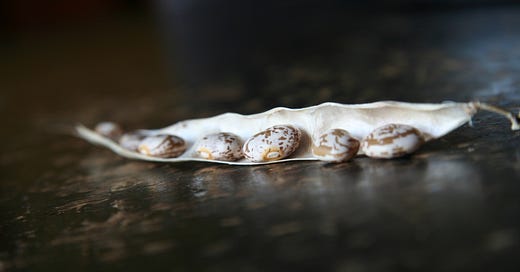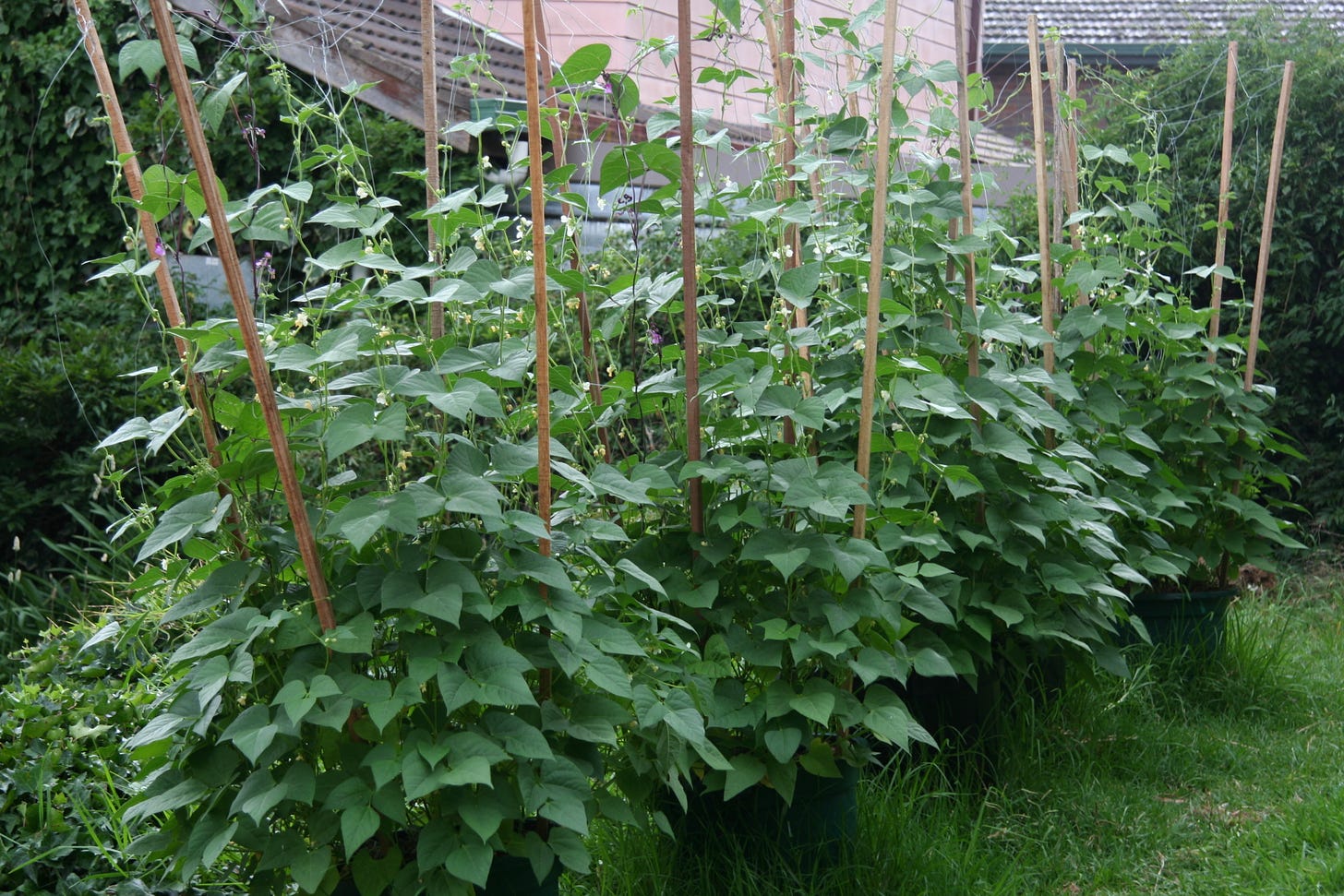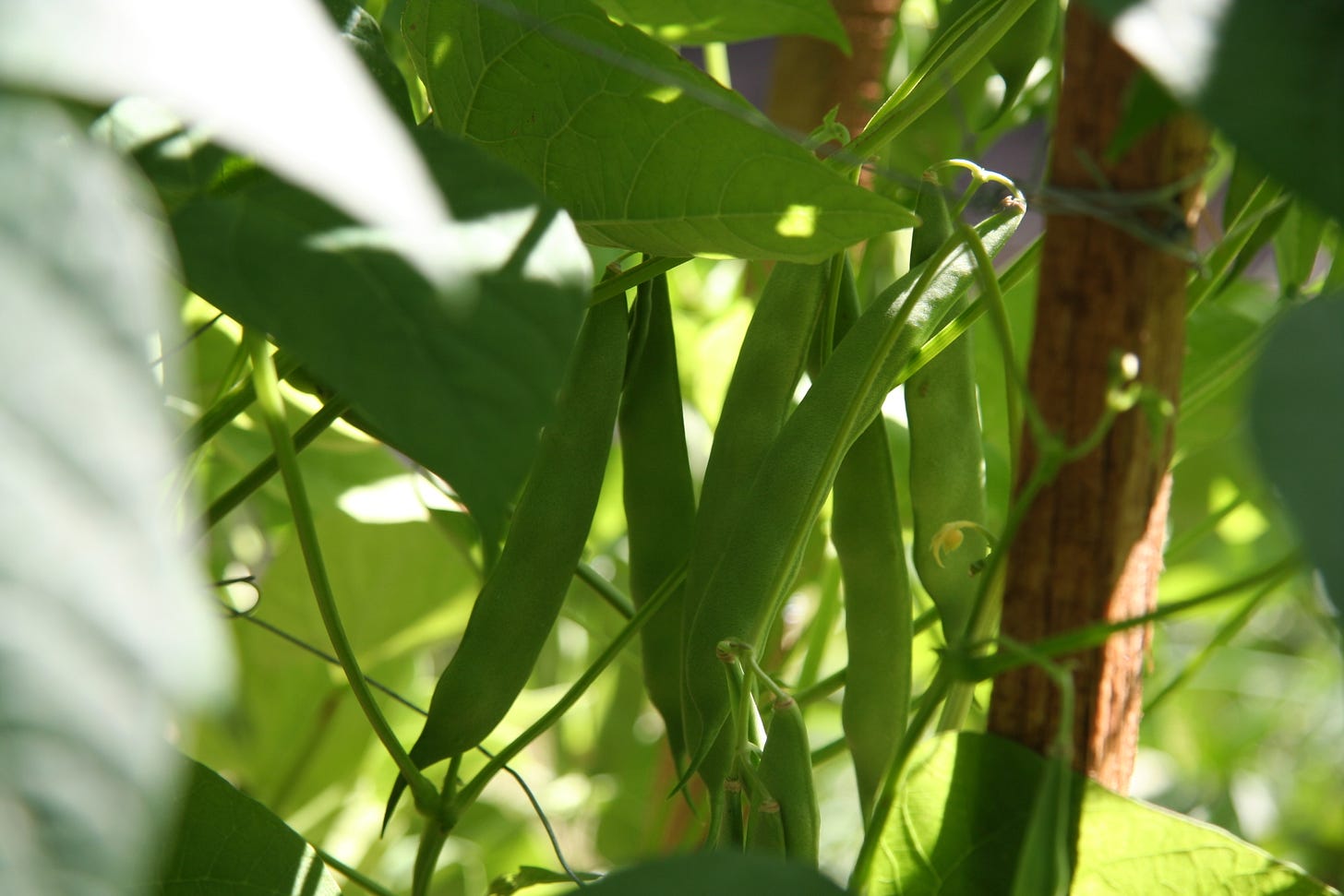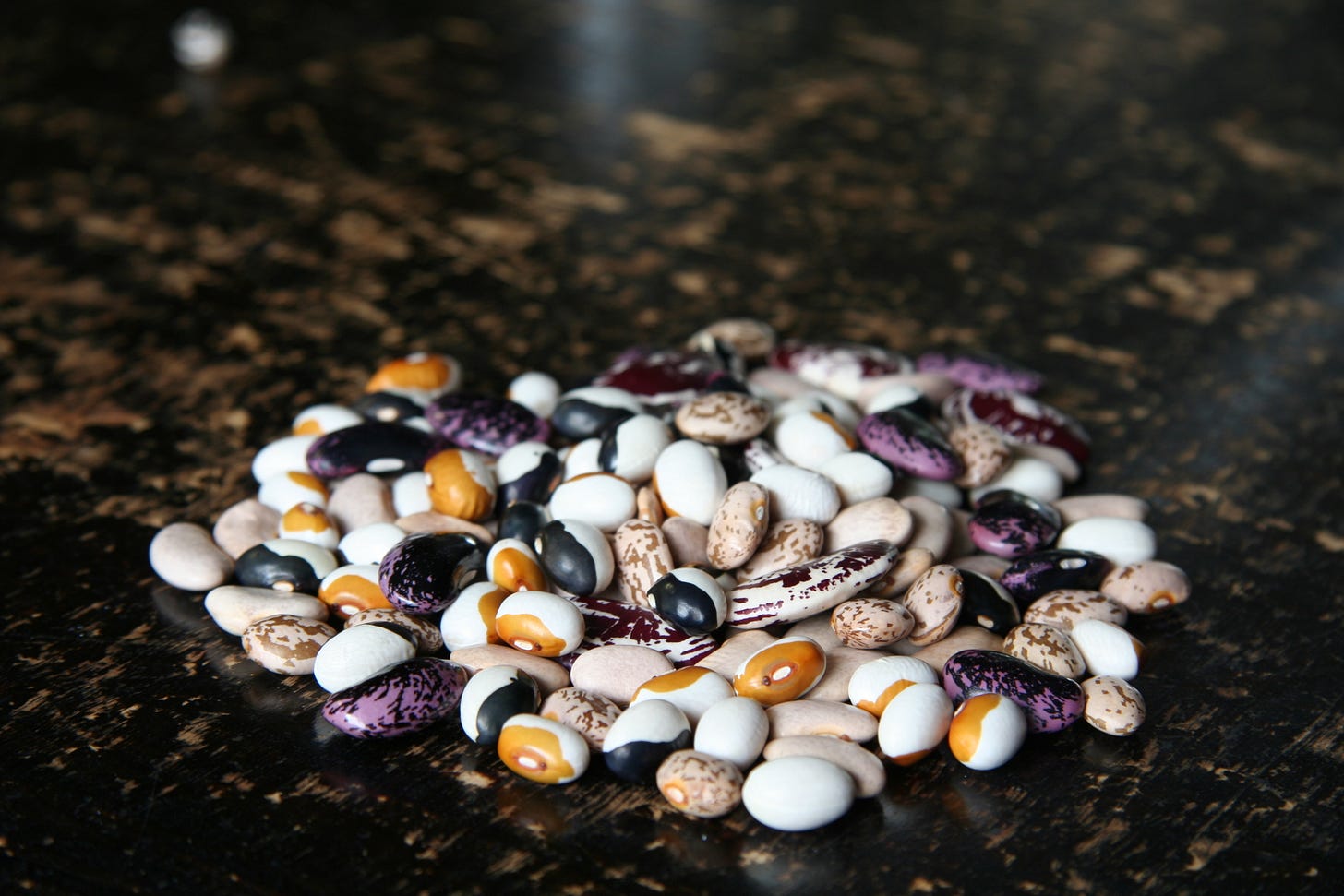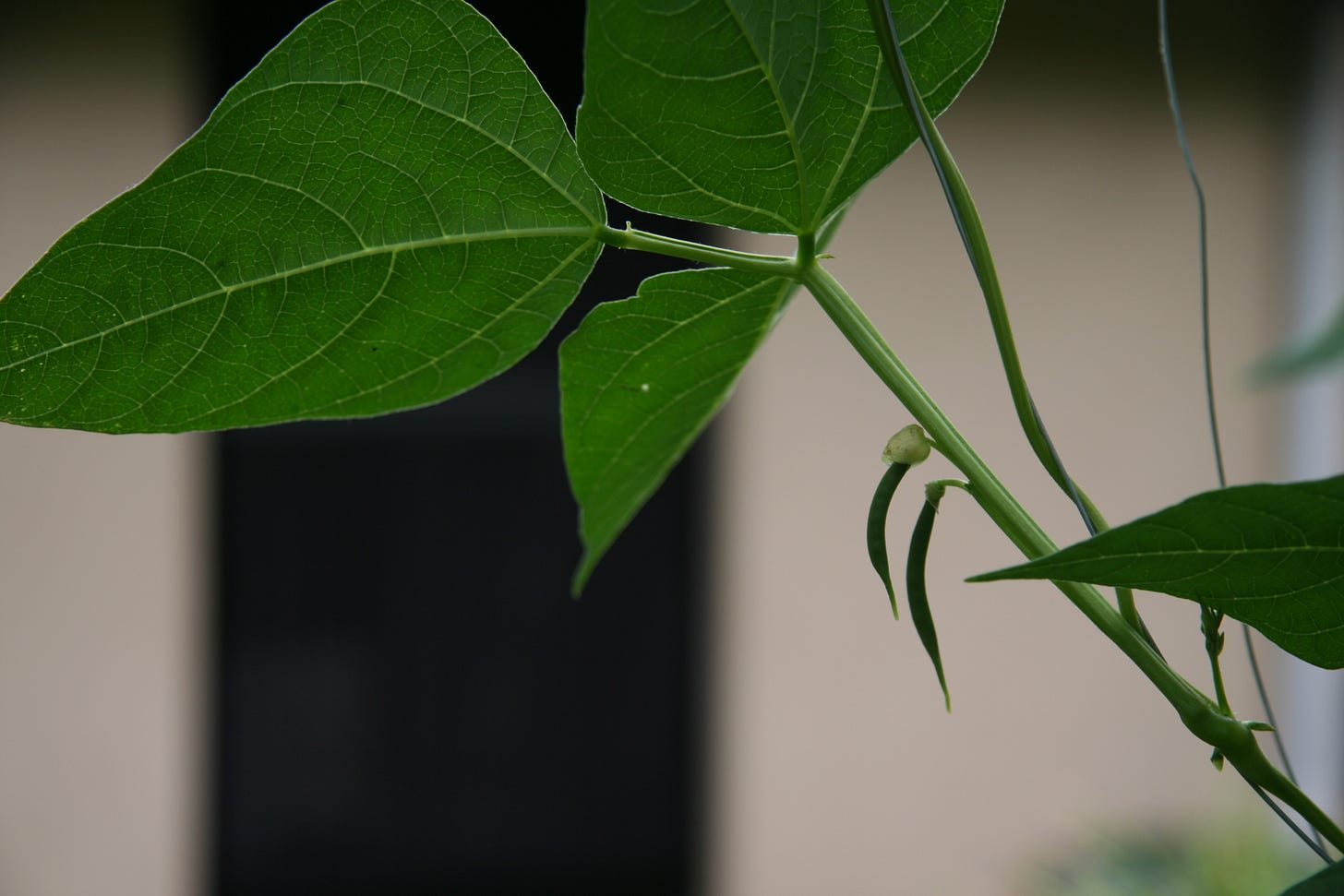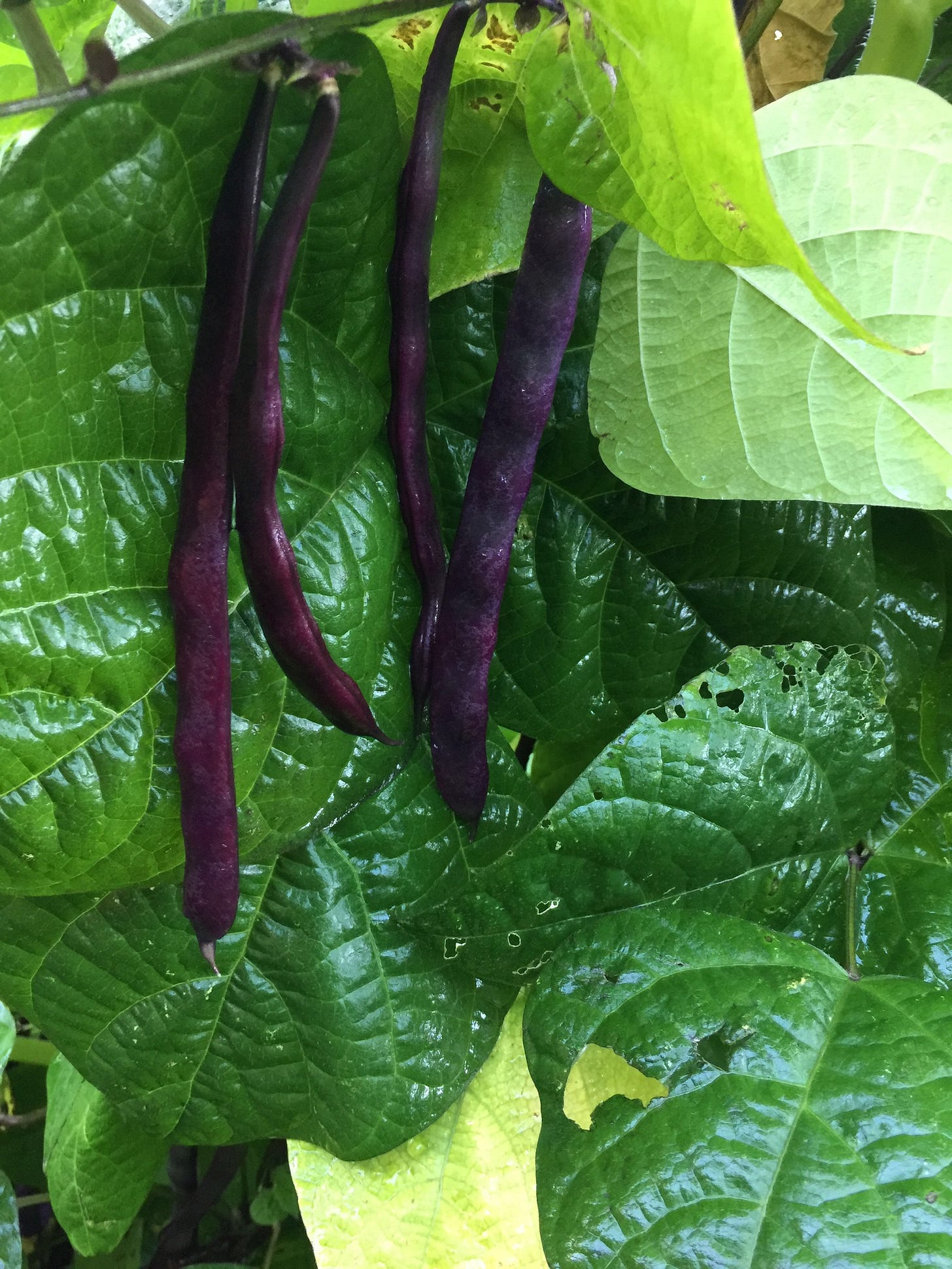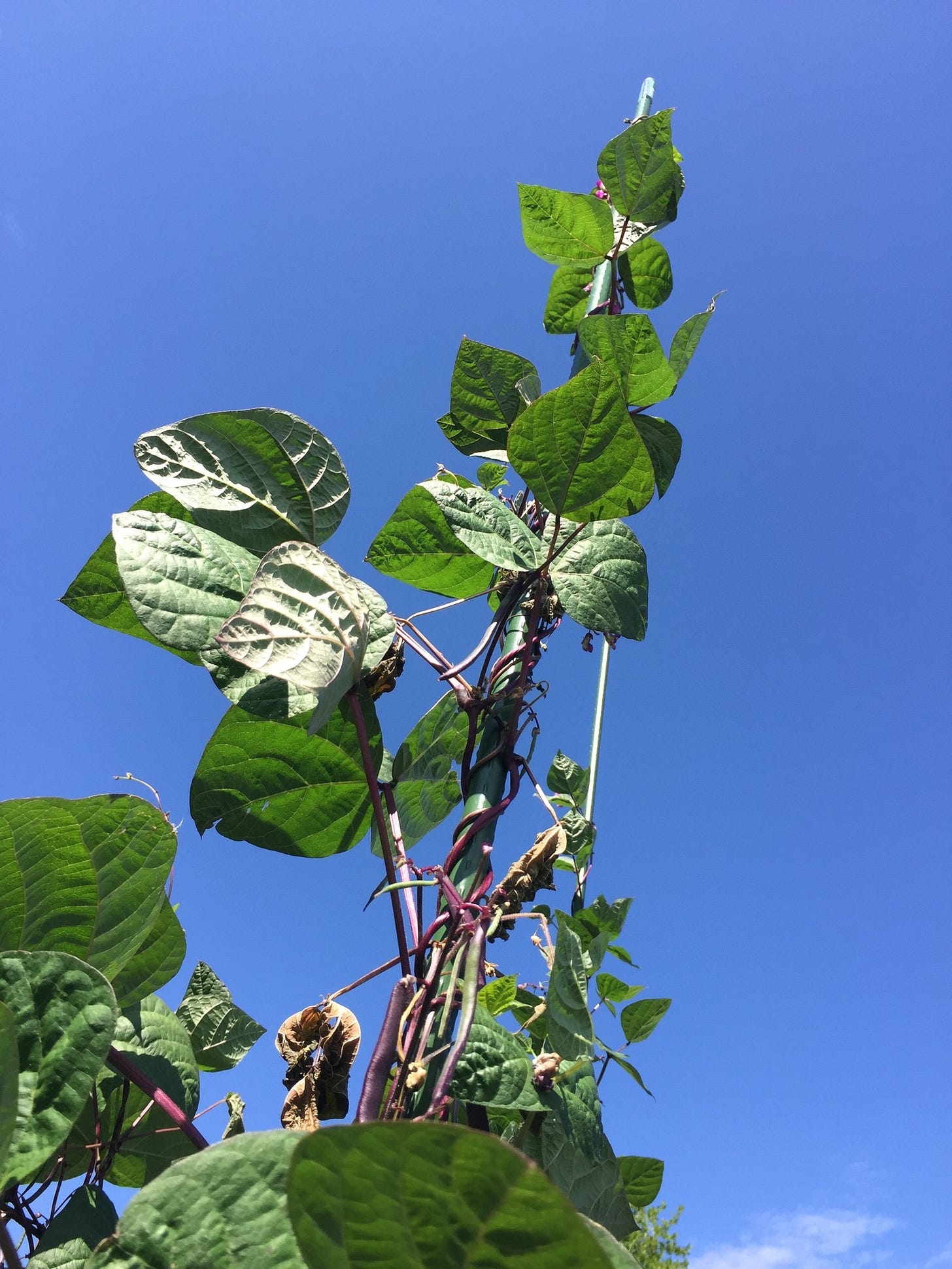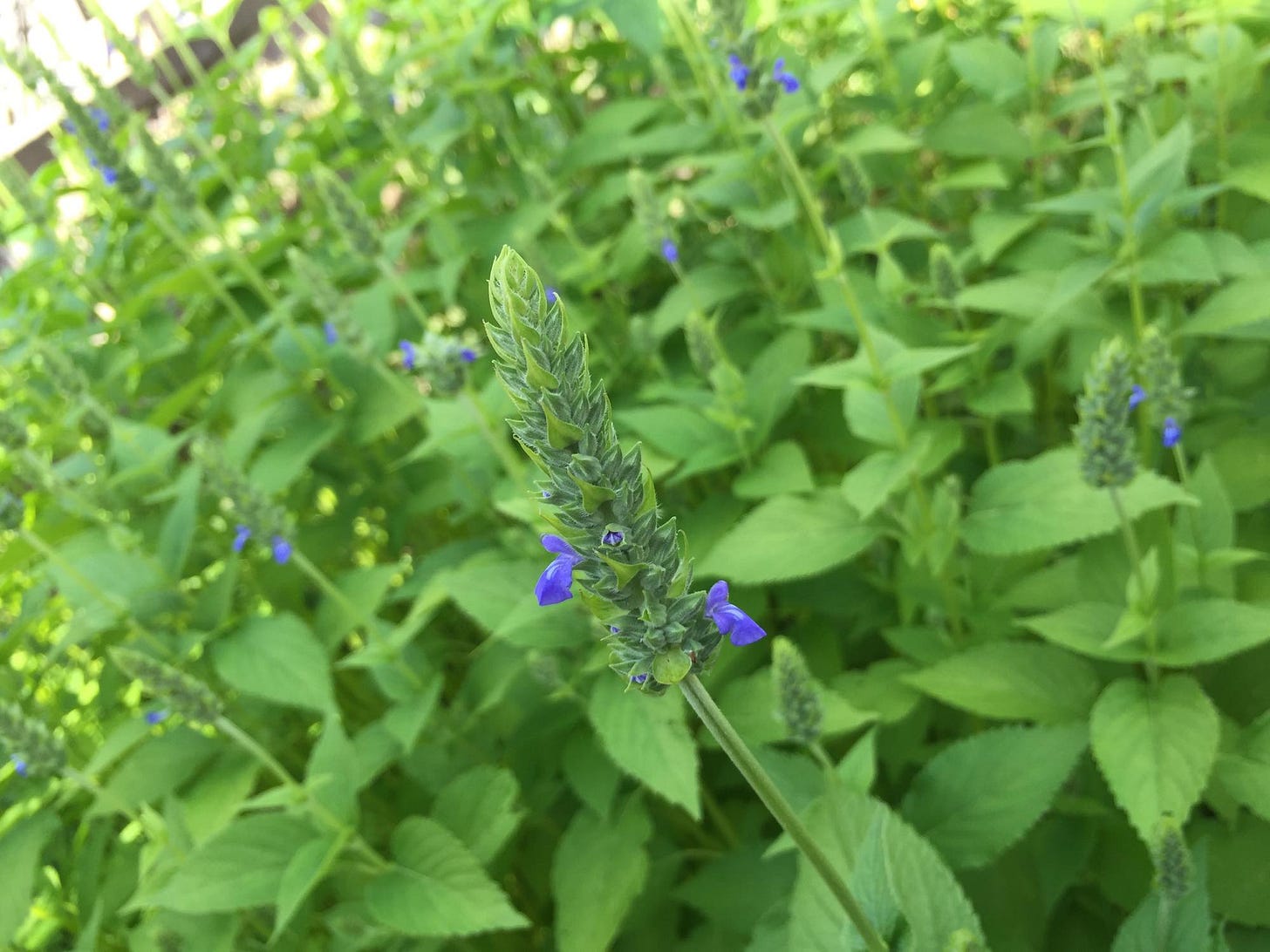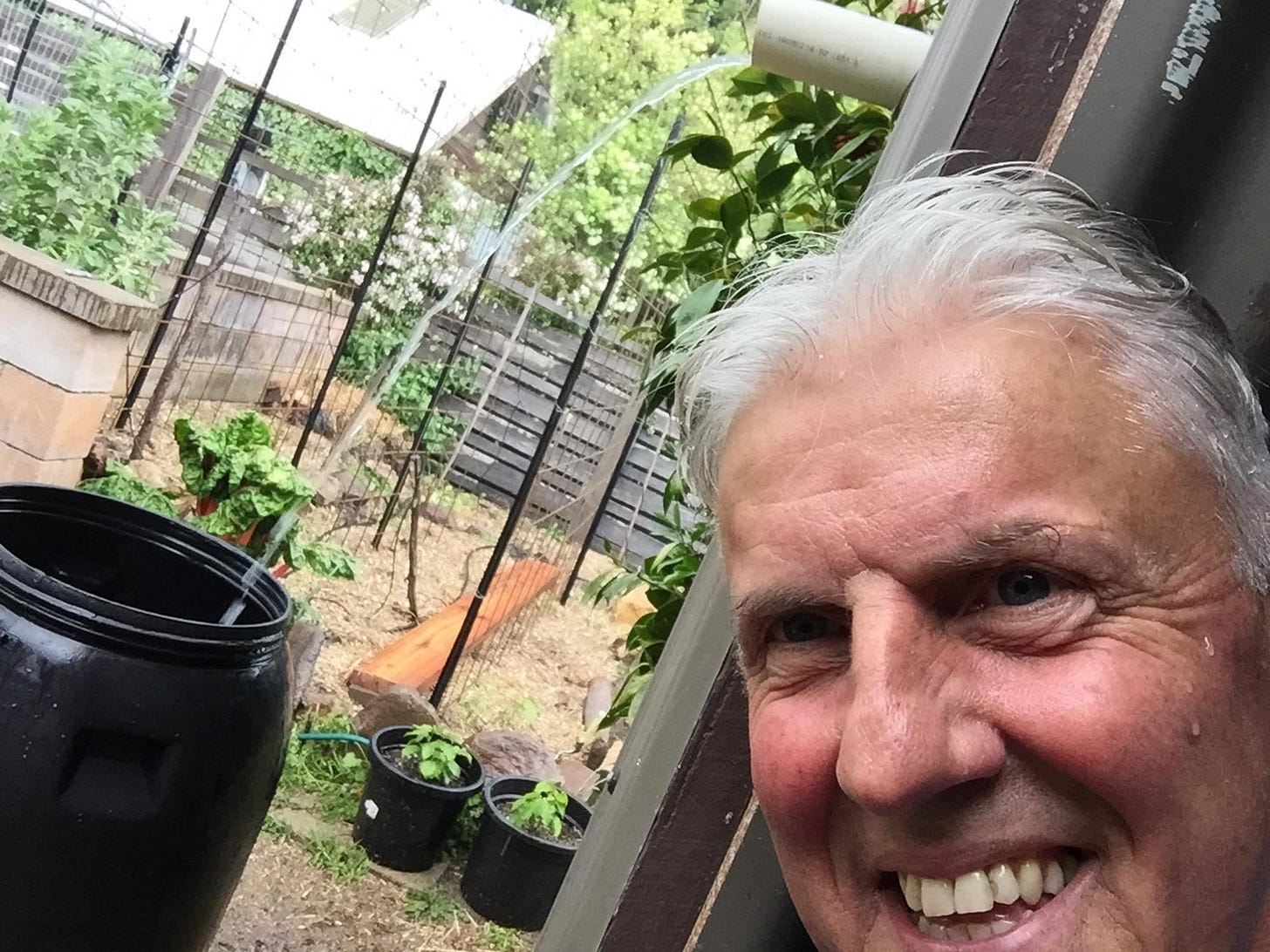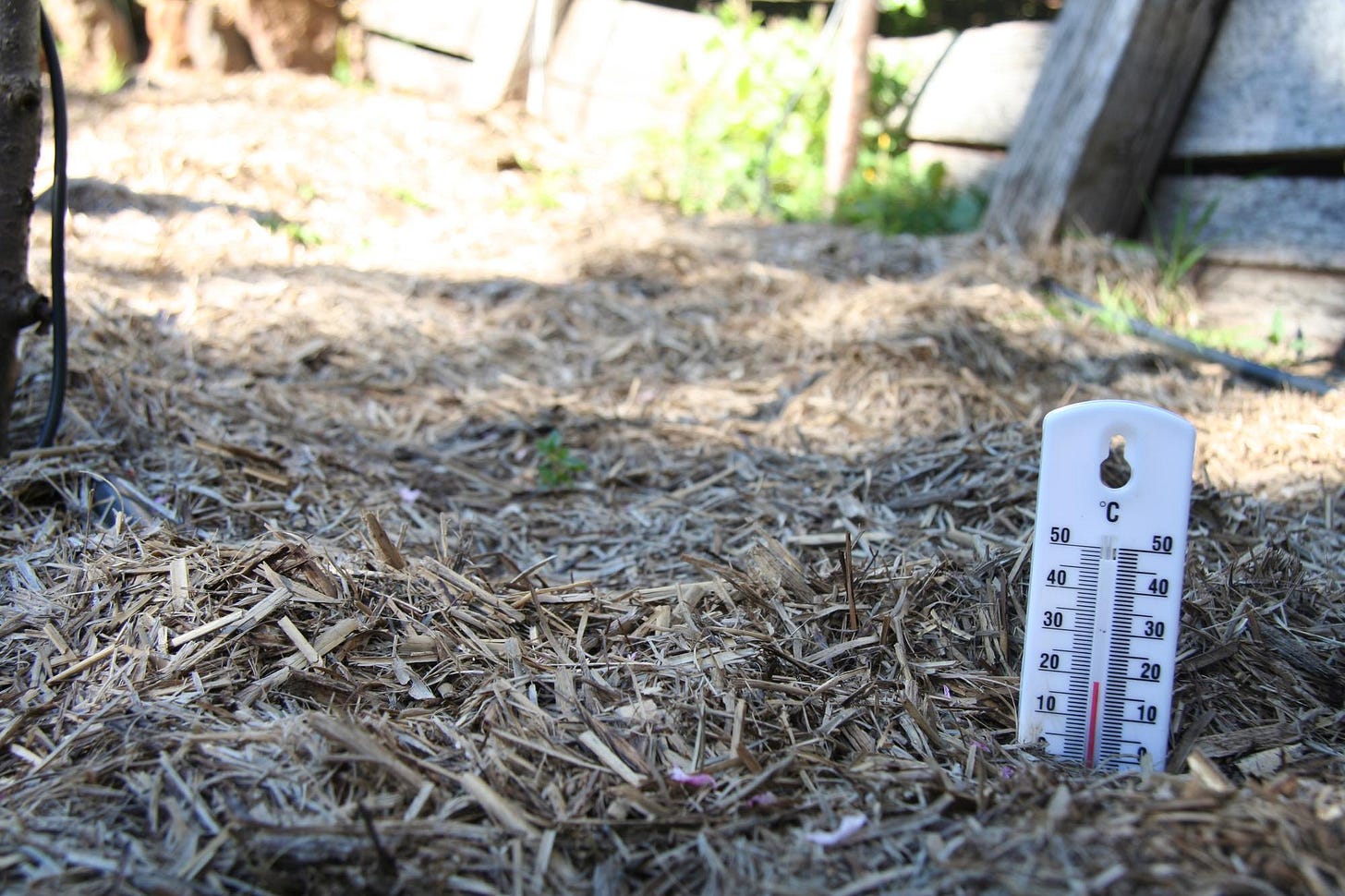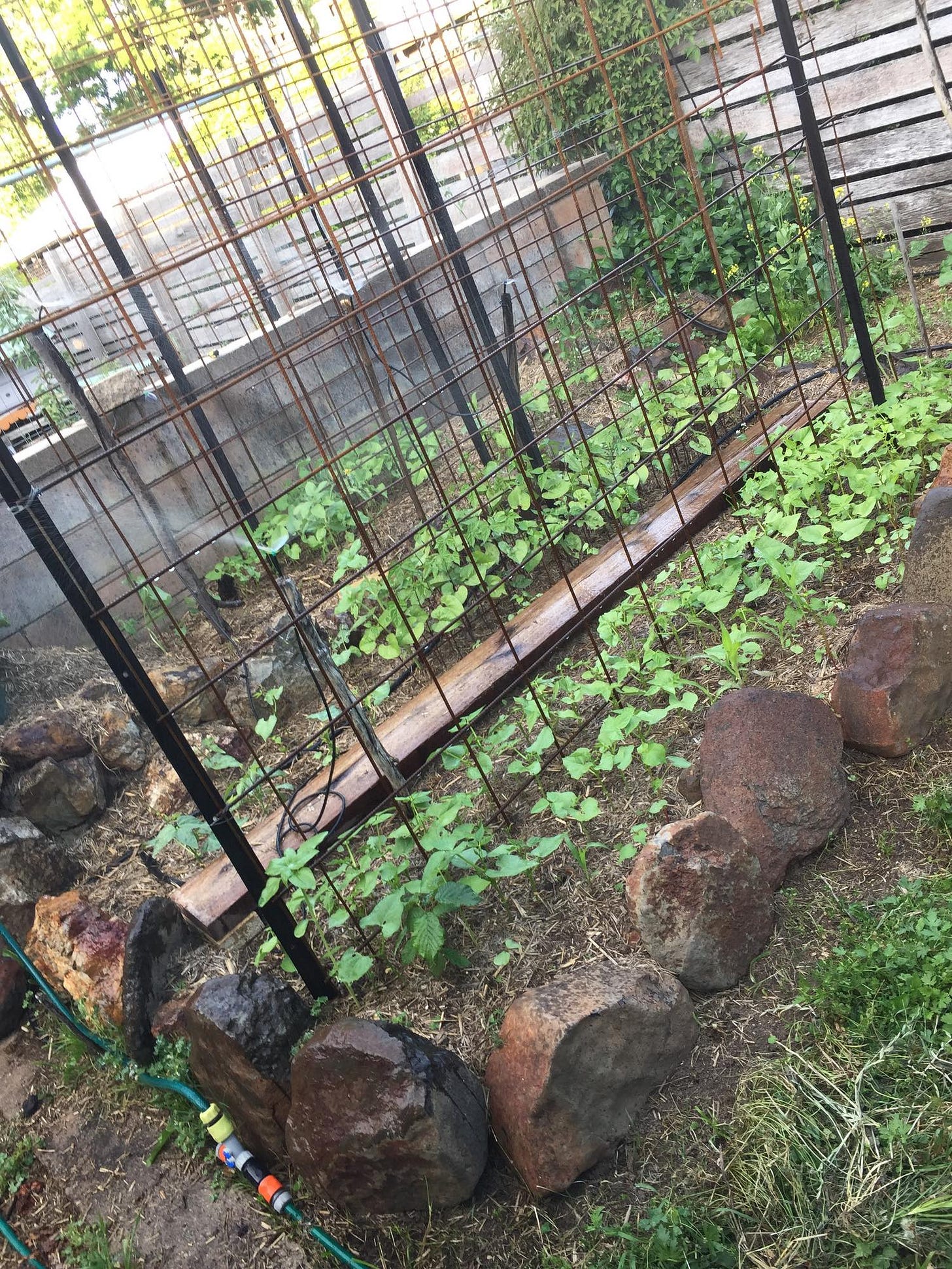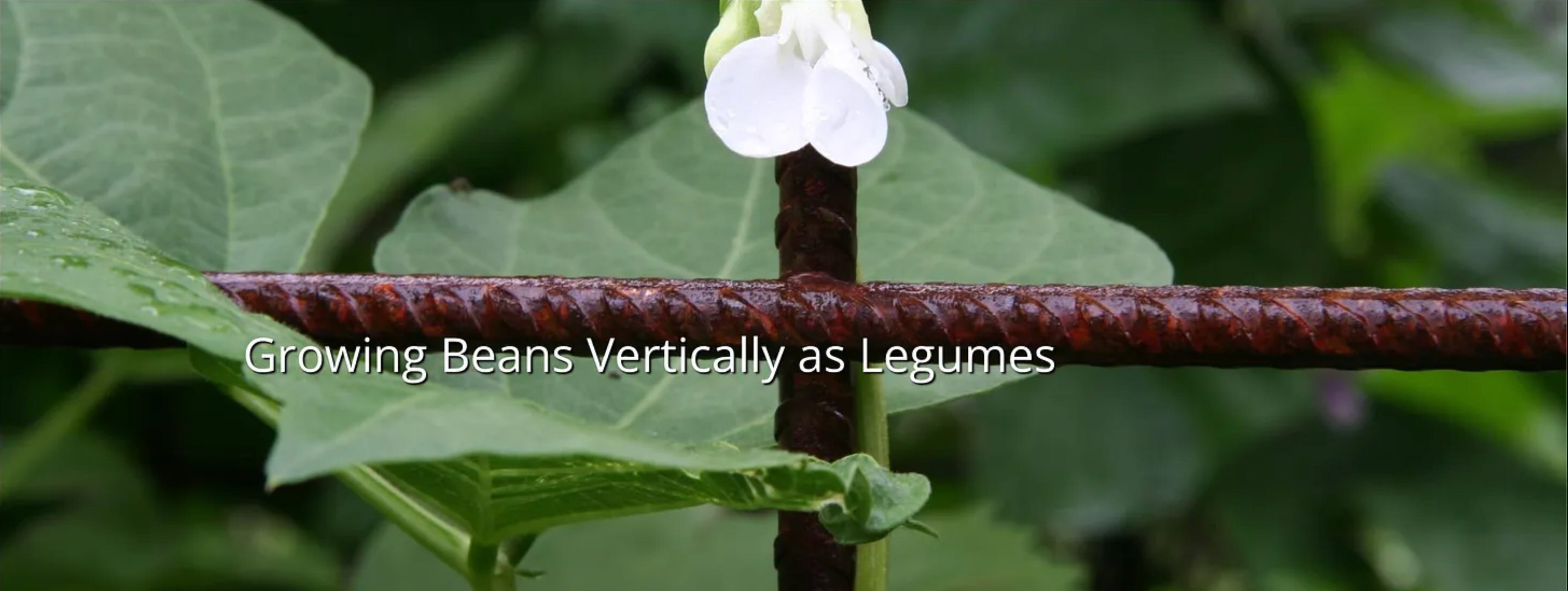Optimal cooking, growing & storing techniques for Legumes (dried beans)
Part of an intensely healthy yet delicious whole food eating regime - often referred to as the Mediterranean Diet. Tips on growing protein rich legumes (beans) at home and community. Easy peasy & fun.
Contents
Growing Beans and Legumes - simple and enjoyable.
Storing the seeds and legumes
Preparing the legumes for cooking and eating
Nutrition information and an incredible nutrient dense recipe
Growing Beans and Legumes - simple and enjoyable.
The house we were renting in Armidale, NSW, Australia back in 2012 had no opportunity to plant or grow anything in the back yard. I had some heirloom non-hybrid, non-GMO, untreated and open pollinated pinto seeds. I decided to buy 5 large-ish garden pots, put them in the back yard, fill them with high quality clean soil and plant the pinto seeds and nurture them. Well that was the start of a beautiful ongoing friendship that literally continues to blossom to this day.
Their prolific rapid growth was a surprise as nothing was needed to help them grow other than a little water now and then. Bugs didn’t bother them. No fertiliser or sprays needed. Wooden stakes and a little wire provided a means for them to climb.
One can of course eat the green bean as a vegetable when grown. However, I was interested in the seed that was inside the green vegetable bean, commonly known as a legume.
“Don’t Rotate Your Plants! – All living plants have a critical rotational position (CRP), which is established at the time of their germination. The CRP is linked to the Earth’s magnetic field. Transplanting experiments clearly show that plants rotated away from their CRP are set back in their growth and health compared with those given their original orientation. This important feature of plants was discovered by Frances Farrelly, a gifted medical technician, and healer, in the early 1970’s. (Source: Tompkins and Bird, The Secret Life of Plants, 1974.) via BAA “Between the leaves” newsletter.
.If you leave any vegetable bean like the pinto, borlotti, kidney and many others on the vine and let them naturally dry out, harvest them and break open the outer husk, you magically end up with a perfectly dried legume, rich in protein, that can be stored for years before eating or indeed, planting again for a new season. They just keep multiplying when you plant one seed and they add nitrogen to the soil as they grow.



After the prolific harvest of these exquisite silky pintos back in 2012 from just 5 pots in a back yard, I was hooked. Since then extra varieties of heirloom non-hybrid, non-GMO, untreated and open pollinated seeds have been procured and lovingly grown and harvested. These include purple climbers, borlotti, scarlet runners, Kennelly yellow and black beans and lima beans. See image below.
They all look different when growing and display uniques coloured flowers that attract bees and add beauty to any garden.
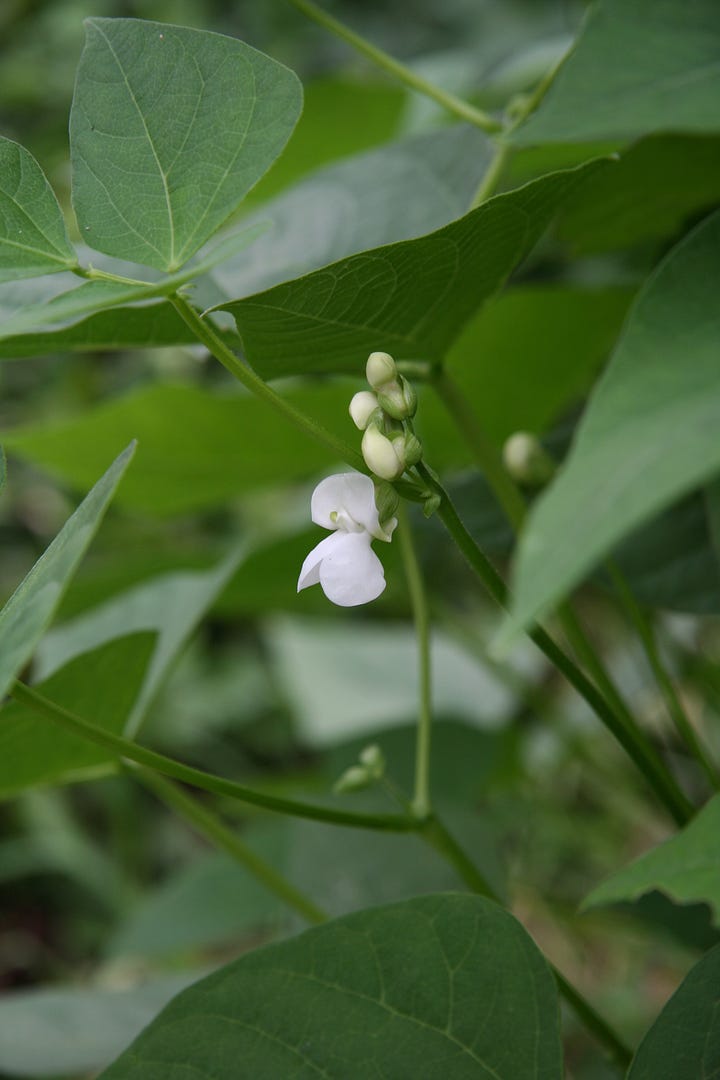
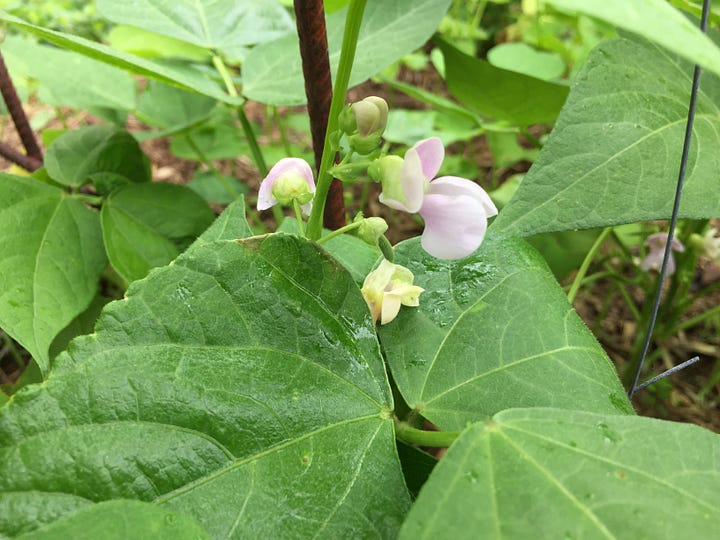
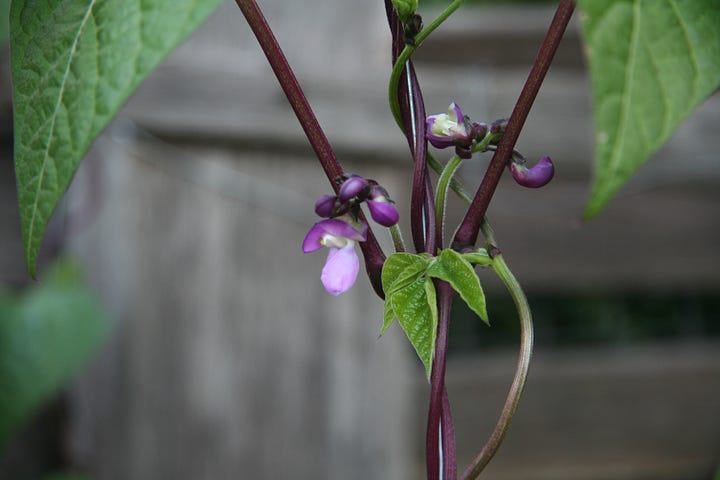
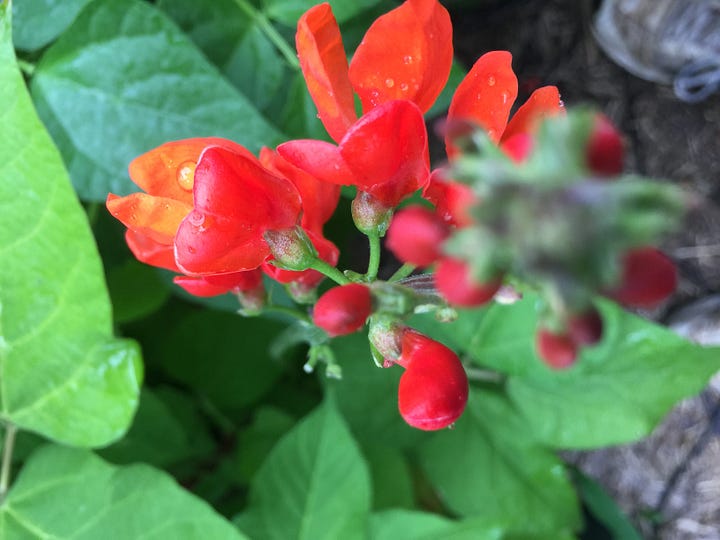
The dried husk as shown below is remarkably protective of the legume seeds inside, even when it looks old and spotty. The inside husk coating is fibrous and also silky and keeps the seeds inside cosy and pristine even during intense rains, sunshine and heat. These husks make ideal mulch and compost when discarded.
The young bean plants are sensitive to frost, so wait till that time passes and plant when the soil temperature hits 18 degrees centigrade.
Prepare the soil so that it loose, moist and soft and push the seed into the soil to a depth of about 2-3 cm, and cover with the soil. I like to crowd the seeds in, so I separate them by about an adults hand width. They don’t seem to mind, especially if the soil is rich. The yield is remarkable. Finish by covering with some mulch like organic sugar cane mulch.


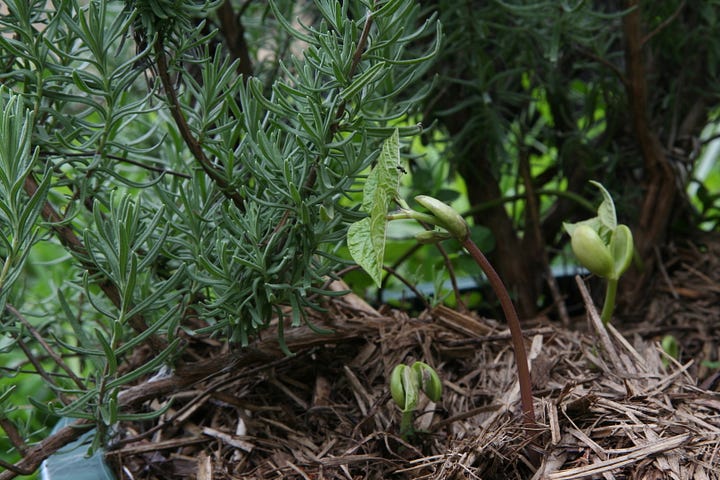

“Once we appreciate the soil as a factor in the drought, then we can use the years of no soil damage to build the soil fertility, Then there is less disaster from the drought when it occurs. Fertility is the major means of managing soil to mitigate drought damage, and to give bigger crop returns when there is no drought.” Dr William Albrecht from his article – The Drought Myth – An Absence of Water is Not the Problem
Purple climber beans – delicious and nutritious
These are the most prolific growers in any of the soil conditions in the garden. Last year they gave 2 crops in one season with the extended summer. Recently tried some of the dried beans I had stored away. They were delicious and reminiscent of kidney beans in both size and colour.
Scarlet Runner
Purple climber @ 3.5 metres
An experiment to see how high they would go – unstoppable. And they are producing beans at this height. By the way these plants are growing out of pots!!
We have security when we grow these bountiful plants (see below) and have no need for pesticides or fertilisers while bees and other pollinators visit frequently as we also have other colourful plants growing nearby. Consequentially, the soil is rich in mycorrhizal fungi, worms and diverse soil microbial communities.
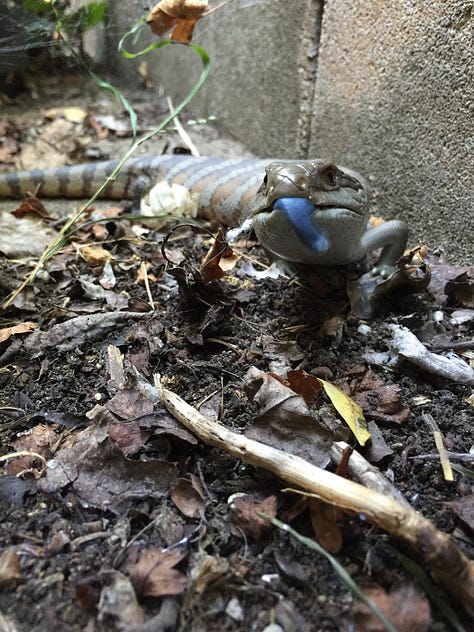
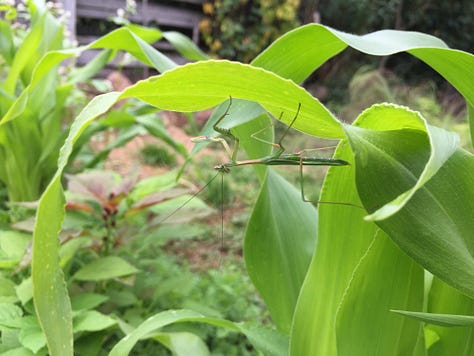
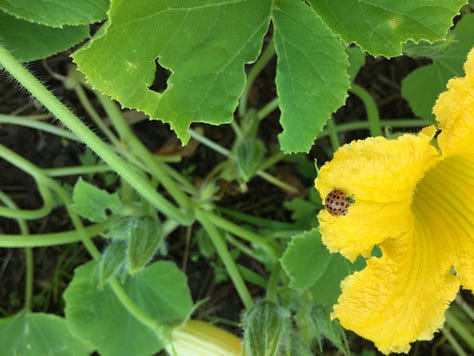
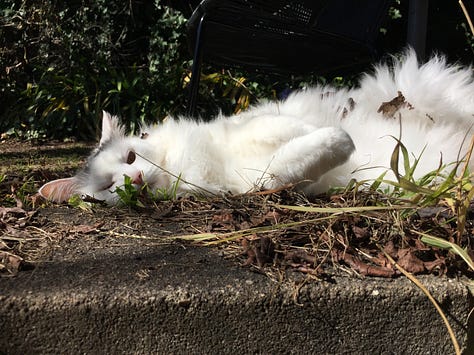
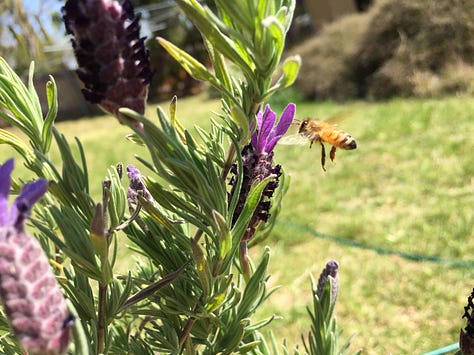
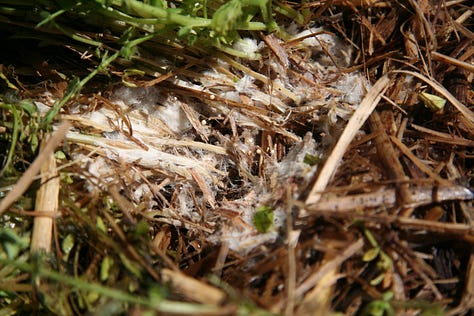
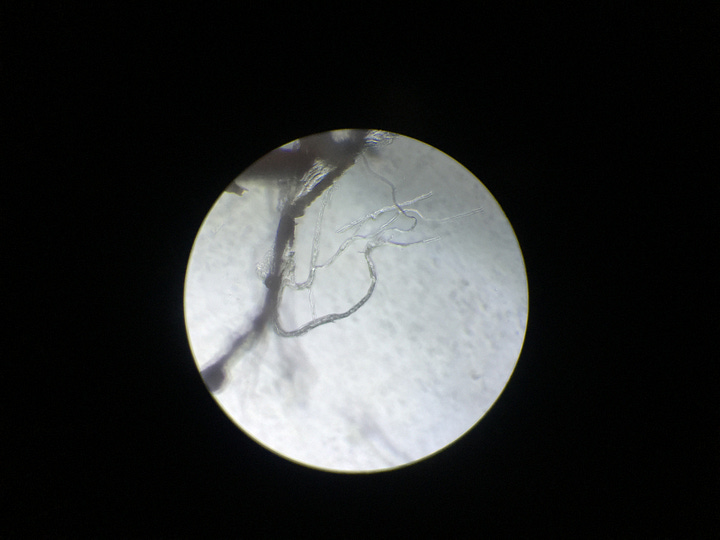
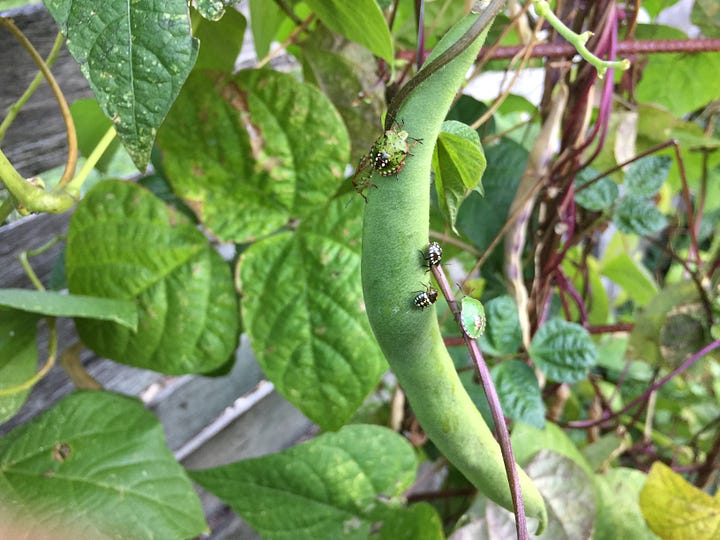
Mycorrhizal fungi filaments under microscope is the circular image above.
This picture was taken through my microscope using an iPhone placed over the eyepiece. The sample came from the compost heap. Yes they are mycorrhizal fungi filaments – mycelium running as renowned mycologist, Paul Stamets would say.
We also use cover crops during the off season. This attracts bees and develops mycorrhizal fungi. Winter chia seed also attracted lots of bees with the beautiful violet flowers seen below.
“The soluble carbon exuded into the rhizosphere by perennial groundcover plants and/or transported deep into soil by mycorrhizal fungi, provides energy for the vast array of microbes and soil invertebrates that produce sticky substances enabling soil particles to be glued together into clumps (aggregates).
When soil is well aggregated, the spaces (pores) between the aggregates allow the soil to breathe, as well as absorb moisture quickly when it rains. A healthy topsoil should be ‘more space than stuff’, that is, less than 50% solid materials and more than 50% spaces.” Dr Christine Jones
Interspersed between these pictures are extraordinary quotes from soil scientists and eco-agricultural, biological and nature attuned farmers.
This knowledge goes back to the early part of the last century, was buried and ignored soon after the fertiliser and pesticide boom after the 1940’s, but thankfully has been resurrected and is blooming via the eco-agriculture movement, largely initiated by Charles Walters in the USA. He started AcresUSA and it is going strong today even in Australia. Special thanks to Graeme Sait for interviewing many of these brave soil souls in his enlightening book “Nutrition Rules”.
Broad bean Flowers - these developed into large and tasty broad beans.
Capturing rain water using a 300litre cucumber container
Wanted water that was free from chlorine and fluoride so that I could experiment with Compost Tea. “You can encourage fungi growth in that medium, (compost tea) so long as you supply a surface for the fungi to grow on. This is why it is important to add kelp or humic acid to the brew. It is also important to re- strict brewing time to 24 to 48 hours from a fungal point of view. After the fungi have germinated, they don’t survive well in this medium beyond two to three days.” from a Nutrition Rules interview with Dr Elaine Ingham.
Soil temperature of 18C is ideal for planting bean seed directly into the soil
Wanted to maximise the yield per square metre. Researched how close one can plant the bean seeds to achieve maximum yield. Data showed that best yields were achieved with about 7-10cm between seeds and about 30cm between rows. We pushed it and planted some rows much closer together.
Most of the beans planted were climbers, so we took advantage of this and pushed the height aspect also. Purchased some steel construction mesh ($80 per 6 x 2.4 metres), had it cut into four and used this to support our rising bean population. Down the track we used temporary fencing with more mesh per panel for the beans to climb up and is lighter.
Wire mesh to support the climbing beans – 2.4metres high. Beans grew all the way to the top!
Wooden plank situated so I could move between rows without compressing the soil. Microbes and fungi don’t like their home being crushed.
“Endomycorrhizal fungi … their maze of hyphae filaments effectively increases the original surface area of the roots by up to 1000% with a remarkably productive outcome. Root benefits are magnified tenfold and the plant is perfectly positioned to achieve its true genetic potential.” from Nutrition Rules by Graeme Sait
The crop yield was becoming greater every year, so in 2017 I decided to make the seeds available for a small fee on my online store called Hartgoods and the local food shop.
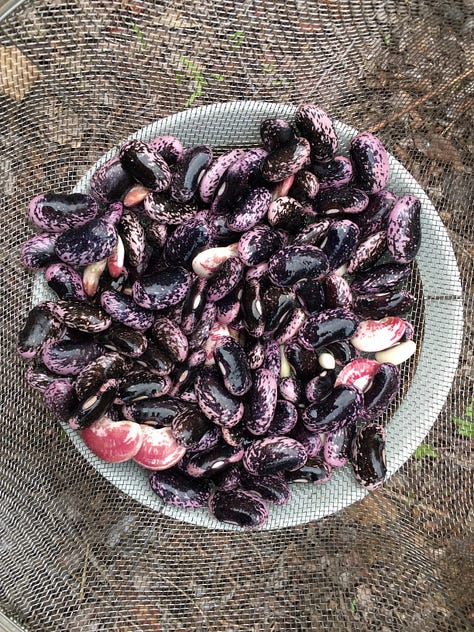

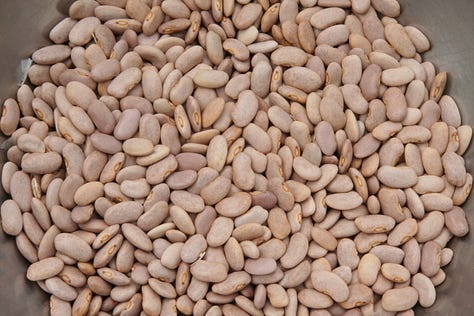

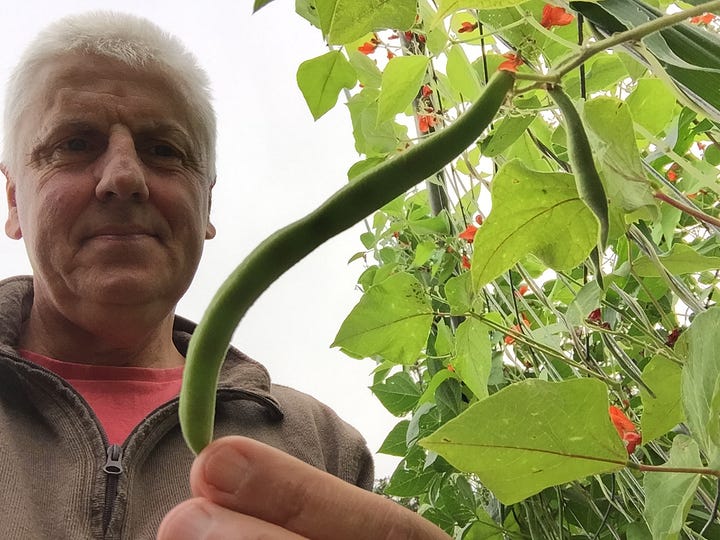
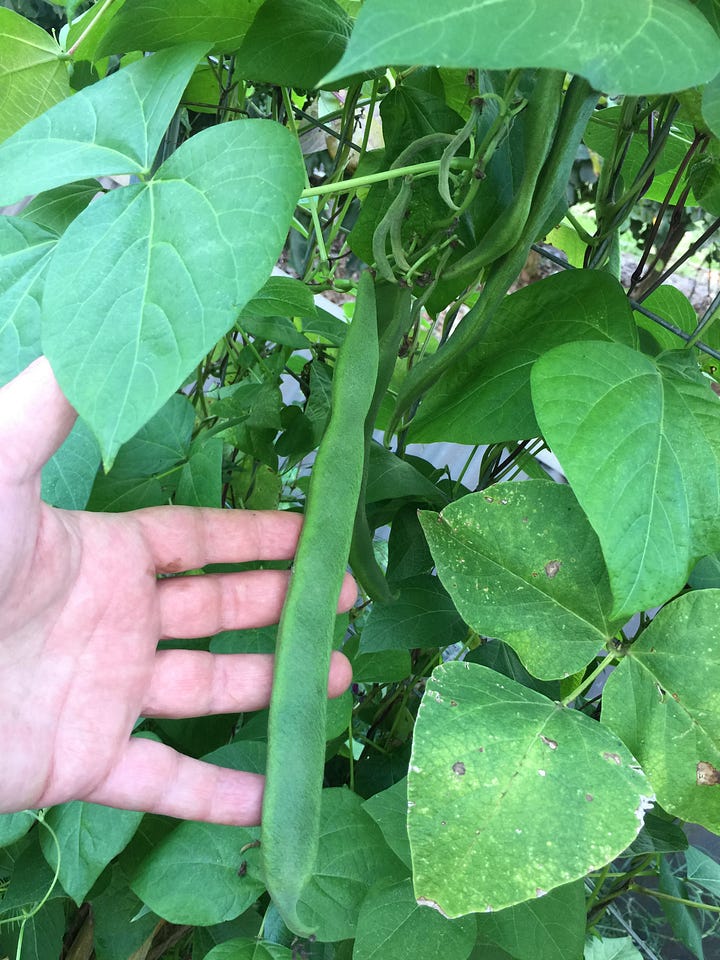
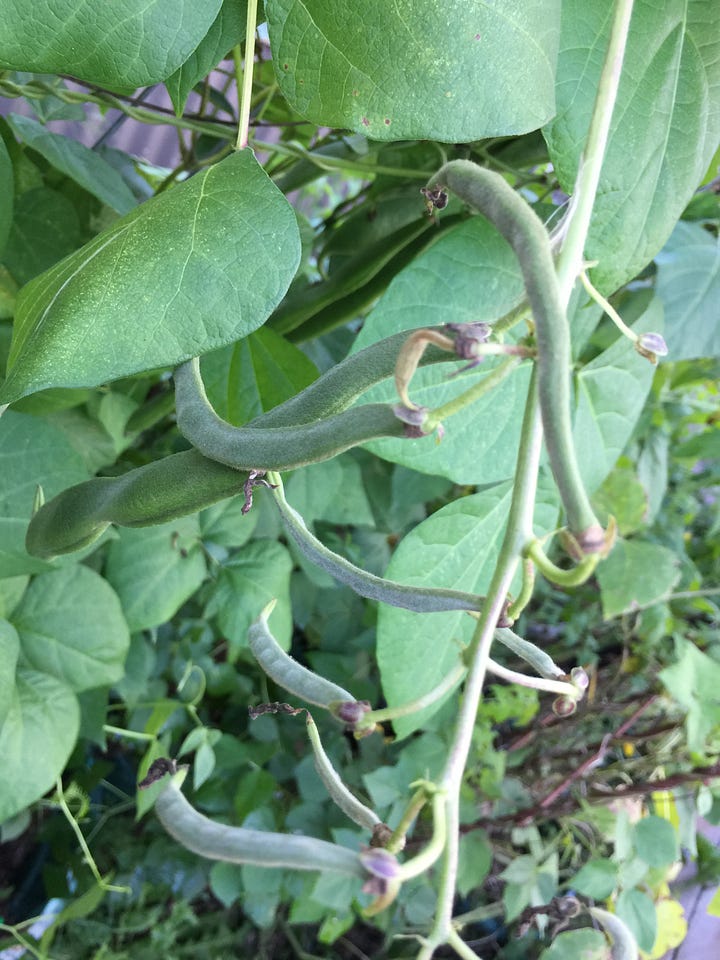
In 2021 we moved to Tasmania and have increased production (still in the backyard) with the intention of going for the biggest yield yet in the smallest space possible. The secret in part, is the wire mesh or simple temporary fencing panels to let the plants climb vertically. This dramatically increases yield per square metre of soil. This year (2024) I have about 24 square metres of backyard space and will report back next year with our yield. Planning for 10-15+ kilos of a variety of dried legumes. That’s enough meals and spare seeds for about a third of the year!

